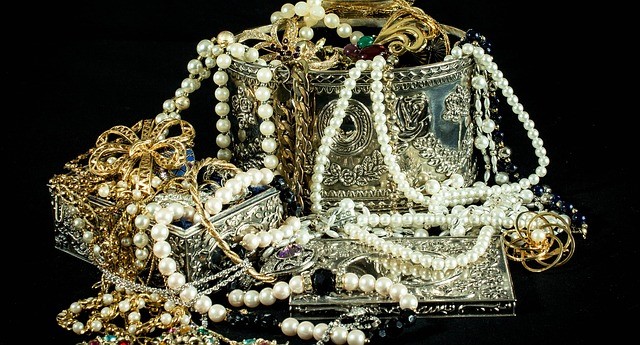With annual global sales of over $166 billion dollars, jewelry production is undeniably one of the world’s largest and most dynamic industries. Even with the recent financial downturn following the COVID-19 outbreak, this industry is still set for a sparkling future.
It all started with national apparel brands, such as C&A in Germany and Marks & Spencer in the United Kingdom. International brands, such as Zara and H&M, later followed and dominated the market. Smaller brands that produce slightly lower quality products have also taken a sizeable share of the market, but branded jewelry remains the favorite.
History and Development
Humans have known and used jewelry for thousands of years, thanks to our natural desire to accessorize either as part of a tradition or as a means to prettify ourselves. Ancient jewelry items were made of a vast assortment of materials, including seashells and peals connected by strings to make necklaces and beads of gems glued on bones to make hairpins.
Today’s jewelry has come a long way from being unsophisticated handicrafts to intricately designed and machined items. The materials used have immensely improved, too. While jewelry pieces made of gold and gemstones were already popular in the early Bronze Age, it is only during the industrial revolution when more varieties with contrasting values had emerged.
Little has changed in the gemstones used in jewelry, and that’s mainly because their value is measured by their purity. The metal that clasps them, on the other hand, has seen remarkable perfections in terms of quality and value, thanks to advances in metallurgy, which gave way to the discovery of alloys that may not be as valuable as the known precious metals but are equally lasting and dazzling.
Types of Metals Used for Making Jewelry
When you think of jewelry, the first thing you’d most likely imagine, apart from the gemstones, is a golden metal component, or a silver one if you like shiny white color better. That’s only natural since gold and silver are the most popular precious metals around. Some people even think that these are the only metals used for making sterling jewelry pieces. Truth is, there a lot more.
Of course, you can’t expect these metals to be in their pure form. Most, if not all, of them are alloys of different metals and they are only named after their base metal. Alloying helps improve the properties of metals and make them more fitted for jewelries. Here are some of the most common metals jewelry making companies use.
-
Titanium
– This metal nearly snatched the spotlight from gold in recent years. When it debuted as one of the toughest materials on the planet, everyone wanted a piece of it. True enough, this metal is so strong that even films like The Core used it as a reference to the only metal that could possibly withstand the heat of the Earth’s core. As a jewelry component, it won’t disappoint either. It has a shiny, silvery appeal that makes a great pair to any jewel.
-
Platinum
– Finer and more appealing than titanium, platinum has a brighter and fairer silvery look, which is ideal for making metal jewelry. When paired with colored gems like sapphire and tourmaline, its elegance further stands out. Platinum is also resistant to tarnish so you can enjoy its hypnotic luster for a long time without the need for constant polishing.
-
Copper
– We know copper as the metal that makes up the core of electrical wires. It’s expensive as a construction and electronic material, but as jewelry, it’s quite affordable. After all, copper is more common than other metals used for jewelry making. It also tarnishes faster. Its warm, reddish glow is what charms jewelry aficionados from all over the world.
-
Gold
– Possibly the most precious of all metals used for jewelry, gold is prized for its tarnish-free, warm tone. We’ve known gold for its dazzling yellow color, but truth is gold comes in other colors. You’ve probably heard of white and rose gold. They are nothing short of genuine and sometimes even more elegant-looking than the traditional yellow shade.
-
Brass
– If you want something that looks like gold but many times cheaper, brass may just be your best bet. The only difference between brass and gold is that the former is not resistant to tarnish, and that’s mainly because brass is a copper-based alloy. It’s less valuable, too, considering that both of its main components—copper and tin—are not considered as precious metals. Thanks to brass suppliers, there’s been a steady supply of brass for jewelry making.
Generally, most metals can be shaped into jewelry pieces. Even aluminum and certain types of steel, which are essentially for industrial and construction use have their fair share of presence in the jewelry market. Because some metals are more valuable than others, however, only those mentioned above are frequently utilized. Their value varies depending on a number factors, include the quality of the metal, where they were quarried, and the company that worked them.
Metals like copper, brass, and bronze are forged in foundries before they can be utilized as raw materials for jewelry making. They can be manufactured into plates, bars, or even strips for easy cutting and machining. Copper and brass suppliers like Rotax Metals are the go-to resource for high-quality copper-based metals for jewelry making.


